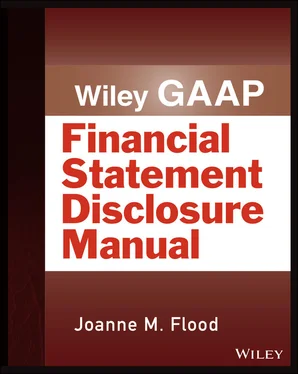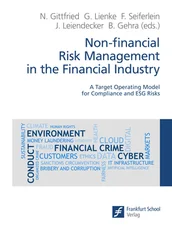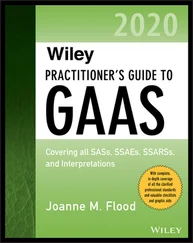Limit of Liability/Disclaimer of Warranty: While the publisher and author have used their best efforts in preparing this book, they make no representations or warranties with respect to the accuracy or completeness of the contents of this book and specifically disclaim any implied warranties of merchantability or fitness for a particular purpose. No warranty may be created or extended by sales representatives or written sales materials. The advice and strategies contained herein may not be suitable for your situation. You should consult with a professional where appropriate. Neither the publisher nor author shall be liable for any loss of profit or any other commercial damages, including but not limited to special, incidental, consequential, or other damages.
For general information on our other products and services or for technical support, please contact our Customer Care Department within the United States at (800) 762‐2974, outside the United States at (317) 572‐3993, or fax (317) 572‐4002.
Wiley publishes in a variety of print and electronic formats and by print‐on‐demand. Some material included with standard print versions of this book may not be included in e‐books or in print‐on‐demand. If this book refers to media such as a CD or DVD that is not included in the version you purchased, you may download this material at http://booksupport.wiley.com. For more information about Wiley products, visit www.wiley.com.
Library of Congress Cataloging‐in‐Publication Data is Available:
ISBN 9781118572085 (Hardback)
ISBN 9781119365723 (ePub)
ISBN 9781119365747 (ePDF)
Cover Design and Image: Wiley
Wiley GAAP: Financial Statements Disclosure Manual provides summaries of authoritative literature, practice alerts, and hundreds of examples of presentations and disclosures. It is organized to align fully with the structure of the FASB Codification. Chapters begin with a summary of the authoritative literature, including scope, scope exceptions, and technical alerts of relevant FASB Updates, and an alert with common areas of disclosure concerns. The remainder of each chapter contains detailed illustrations of presentations and disclosures. This organization facilitates the primary objective of the book—to assist financial statement preparers and practitioners in resolving the myriad practical problems faced in presenting financial statements.
As a bonus, a comprehensive presentation and disclosure checklist, available online to all Wiley GAAP: Financial Statement Disclosure Manual purchasers, offers practical guidance on preparing financial statements for commercial entities in accordance with GAAP. For easy reference and research, the checklist also follows the order of the Codification. To download the checklist, go to www.wiley.com/go/FSDM2021(password: Flood).
The author's wish is that this book will serve preparers, practitioners, faculty, and students as a reliable reference tool to facilitate their understanding of, and ability to, present financial statements in accordance with the authoritative literature.
On the Horizon.Significant accounting changes are on the horizon. In the next year, the FASB is expected to make strides on the following major projects and others:
Conceptual framework projects on elements, measurement, and presentation
Identifiable intangible assets
Disclosure framework revisions on income taxes, inventory, interim reporting, government acquisitions
Disaggregation of performance information
Not‐for‐profit reporting of gifts‐in‐kind
Segment reporting
Numerous narrow scope projects
This volume is current through ASU 2020‐06. Readers are encouraged to check the FASB website for status updates to FASB projects.
Joanne M. Flood
September 2020
Joanne M. Flood,CPA, is an author and independent consultant on accounting and auditing technical topics and e‐learning. She has experience as an auditor in both an international firm and a local firm and worked as a senior manager in the AICPA's Professional Development group. She received her MBA summa cum laude in accounting from Adelphi University and her bachelor's degree in English from Molloy College.
While in public accounting, Joanne worked on major clients in retail, manufacturing, and finance and on small business clients in construction, manufacturing, and professional services. At the AICPA, she developed and wrote e‐learning, text, and instructor‐led training courses on U.S. and international standards. She also produced training materials in a wide variety of media, including print, video, and audio, and pioneered the AICPA's e‐learning product line. Joanne resides on Long Island, New York, with her daughter, Elizabeth. She is the author of the following Wiley publications:
Financial Disclosure Checklist
Wiley GAAP 2021: Interpretation and Application of Generally Accepted Accounting Principles
Wiley Practitioner's Guide to GAAS 2021: Covering all SASs, SSAEs, SSARSs, and Interpretations
Wiley GAAP: Financial Statement Disclosures Manual (Wiley Regulatory Reporting)
Wiley Revenue Recognition
1 ASC 105 GENERALLY ACCEPTED ACCOUNTING PRINCIPLES
1 Authoritative Literature What Is GAAP? Accounting Principles and Concepts Recognition Principles Disclosure Principles The Concept of Materiality Descriptions of Materiality Quantitative Factors Qualitative Factors Degree of Precision
2 Disclosure and Presentation Requirements
Accounting Standards Codification (ASC) Topic 105 establishes the FASB Accounting Standards Codification TM(the Codification) as the source of authoritative GAAP. ASC 105 contains no disclosure or presentation requirements.
The Codification (ASC) is the:
… source of authoritative generally accepted accounting principles (GAAP) recognized by the FASB to be applied by nongovernmental entities. Rules and interpretive releases of the Securities and Exchange Commission (SEC) under authority of federal securities laws are also sources of authoritative GAAP for SEC registrants. In addition to the SEC's rules and interpretive releases, the SEC staff issues Staff Accounting Bulletins that represent practices followed by the staff in administering SEC disclosure requirements, and it utilizes SEC Staff Announcements and Observer comments made at Emerging Issues Task Force meetings to publicly announce its views on certain accounting issues for SEC registrants. ASC 105‐10‐05‐1
In the absence of authoritative guidance, the Codification offers the following approach:
If the guidance for a transaction or event is not specified within a source of authoritative GAAP for that entity, an entity shall first consider accounting principles for similar transactions or events within a source of authoritative GAAP for that entity and then consider nonauthoritative guidance from other sources. An entity shall not follow the accounting treatment specified in accounting guidance for similar transactions or events in cases in which those accounting principles either prohibit the application of the accounting treatment to the particular transaction or event or indicate that the accounting treatment should not be applied by analogy. ASC 105‐10‐05‐2
The Codification lists some possible nonauthoritative sources:
Practices that are widely recognized and prevalent either generally or in the industry
FASB Concepts Statements
American Institute of Certified Public Accountants (AICPA) Issues Papers
International Financial Reporting Standards of the International Accounting Standards Board
Читать дальше












